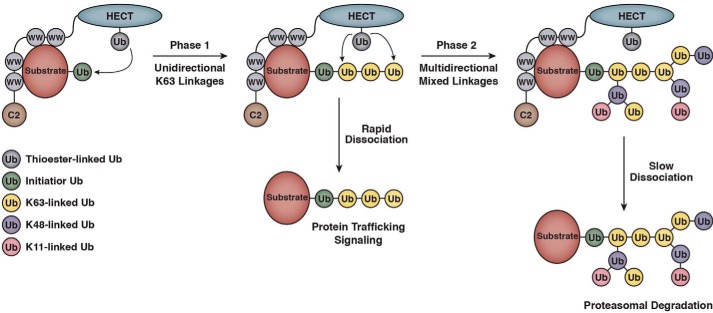Figure 8.
Two-phase model for substrate-linked Ub chain synthesis by WWP1. Once the initiator Ub has been conjugated to the substrate, the formation of Ub chains by WWP1 occurs in two distinct phases. In phase 1, Ub monomers are transferred from the active-site cysteine of WWP1 to the distal Ub on the end of the growing chain. This phase of Ub chain synthesis is unidirectional and occurs with strict specificity for Lys-63 linkages. In phase 2, Ub chain assembly proceeds in a manner that consists of mixed Lys-48, Lys-11, and Lys-63 Ub linkages and is characterized by formation of branched structures. Ub chain synthesis in this phase is multidirectional, resulting in an increase in the density of Ub subunits surrounding the substrate. Substrates that dissociate from the E3 rapidly and therefore do no enter phase 2 are modified with monoubiquitin or short Lys-63-linked chains (2–4 subunits), which typically mark proteins for non-proteasomal pathways. Substrates that remain more stably associated with the E3 and therefore enter into phase 2 have the potential to be modified with larger, more complex Ub chains containing mixed linkages, which are likely to serve as efficient proteasome targeting signals in vivo.

